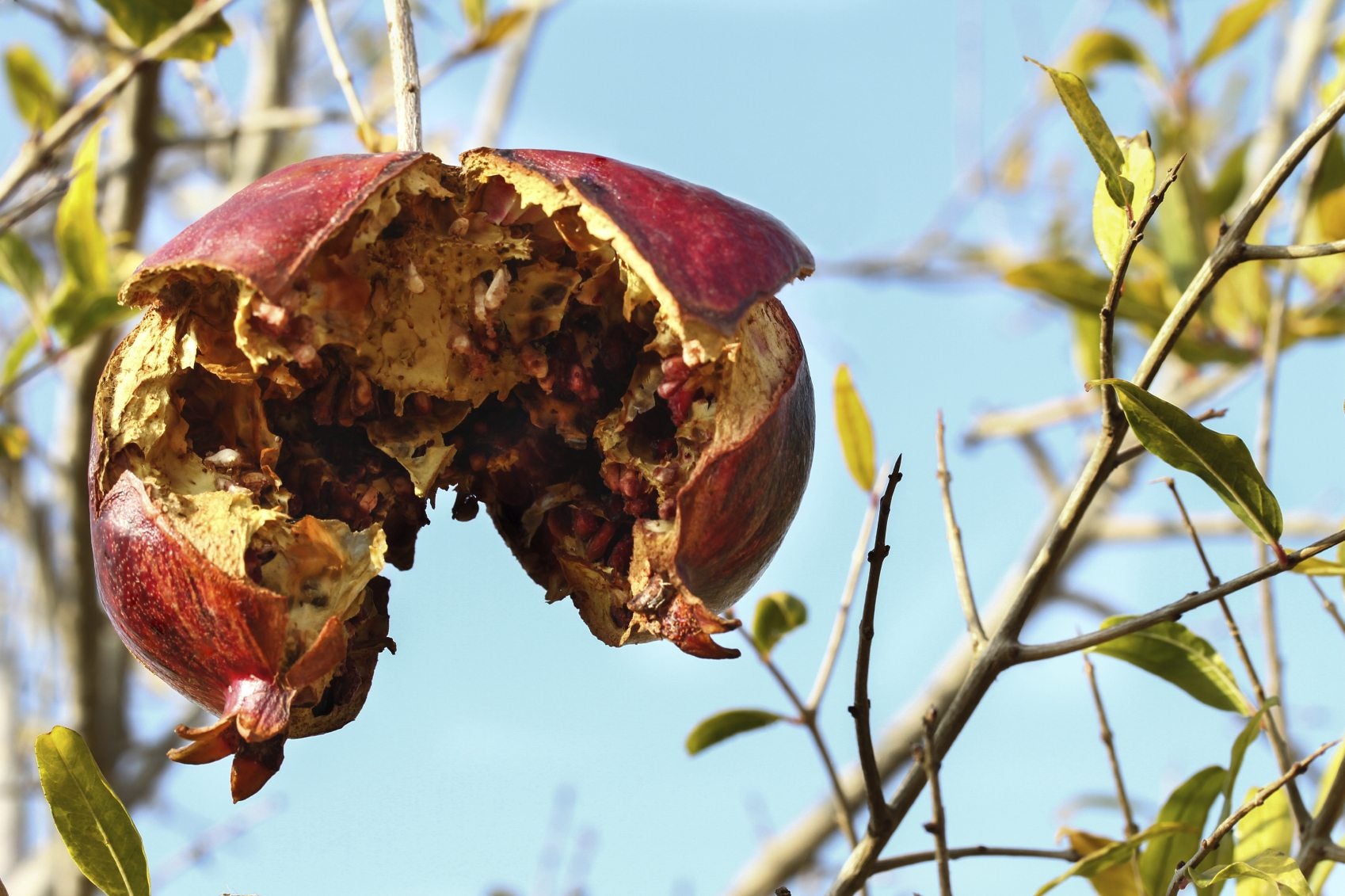Problems Of Pomegranates: Learn About Diseases In Pomegranate


The pomegranate tree originates in the Mediterranean. It prefers tropical to sub-tropical regions but some varieties can tolerate temperate zones. Pomegranate fungal diseases are a common issue in plants grown in wet regions during the spring and early summer. Other diseases in the pomegranate are rarer and not permanently damaging to the tree. Learn the problems of pomegranates and see if this plant is right for you and your region.
Problems of Pomegranates
Pomegranates are fairly vigorous trees or shrubs which adapt well to regions that support citrus plants. There are also varieties suited for semi-temperate zones but these need well-drained soil and protection from excess moisture. Although the plant likes supplemental irrigation in summer for best fruit formation, overly wet soils and humidity can cause a variety of pomegranate tree diseases. There are many methods of treating pomegranate fruit diseases, so don’t despair and keep reading for some solutions. Fungal issues are part of growing pomegranate plants. Pomagranates perform best in areas with hot, dry summers, which means northern gardeners in cooler regions with plentiful rainfall may find raising the tree a challenge. The most frequent complaint is pomegranate tree diseases that affect the fruit. Many fungal issues will cause some leaf drop, but this is generally not enough to affect overall tree health. The fruit is the reason for growing the plant and there are many diseases that will cause splitting, rot and an overall appearance and taste that are unappealing. Start with correct site location and well drained, organically amended soil. Plant the trees 15 to 20 feet (4.5-6 m.) apart to prevent overcrowding and enhance circulation. Fertilize after growth begins with ammonium sulfate divided into four applications starting in February and ending in September.
Specific Pomegranate Fungal Diseases
As the most concerning diseases in pomegranate, fungal issues can be the hardest to control. The frequent agitators are Alternaria fruit rot, Aspergillus fruit rot and Boytrytis.
- Alternaria fruit rot – Alternaria is also called black rot and causes damage to the fruit in the form of wounds and rot on the interior of the fruit. It occurs after heavy rains just when fruit is beginning to form.
- Aspergillus fruit rot – Aspergillus has similar timing and effects as Alternaria fungal issues.
- Botrytris – Botrytis, a gray mold which is familiar to any grower of tropical fruits, infects trees during flowering. Spores infiltrate the flowers and stay in hibernation during fruiting. It is activated during the post harvest wash and spreads like wild fire through all the harvested fruits.
Another occasional fungal issue is Cercospora fruit spot, which will not only cause black rotted spots on the outside of fruit but also compressed black areas on twigs and defoliation. It can actually cause a tree to die over time.
Treating Pomegranate Fruit Diseases
Control of fungal issues should start before the fruit develops in early spring, and continue through summer as fruits mature. Use a copper fungicide according to the directions and promote good circulation by pruning in the dormant season to open the canopy. Many of the exact causes of these diseases are not completely understood, but fungicide use and proper cultivation of the plants can help the tree combat minor infestations. Good healthy trees are less likely to be bothered by minor fungal issues. In the case of Cercospora, removal of diseased leaves, twigs and fruits can help control its spread, along with fungicide application.
Sign up for the Gardening Know How newsletter today and receive a free copy of our e-book "How to Grow Delicious Tomatoes".

Jackie Carroll has written over 500 articles for Gardening Know How on a wide range of topics.